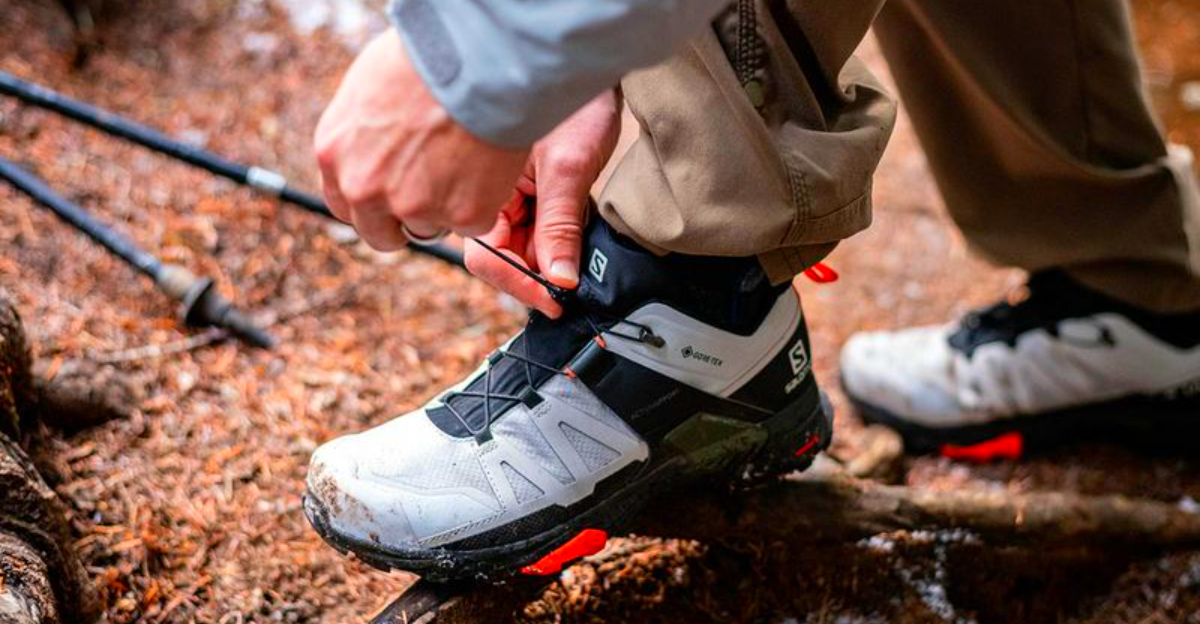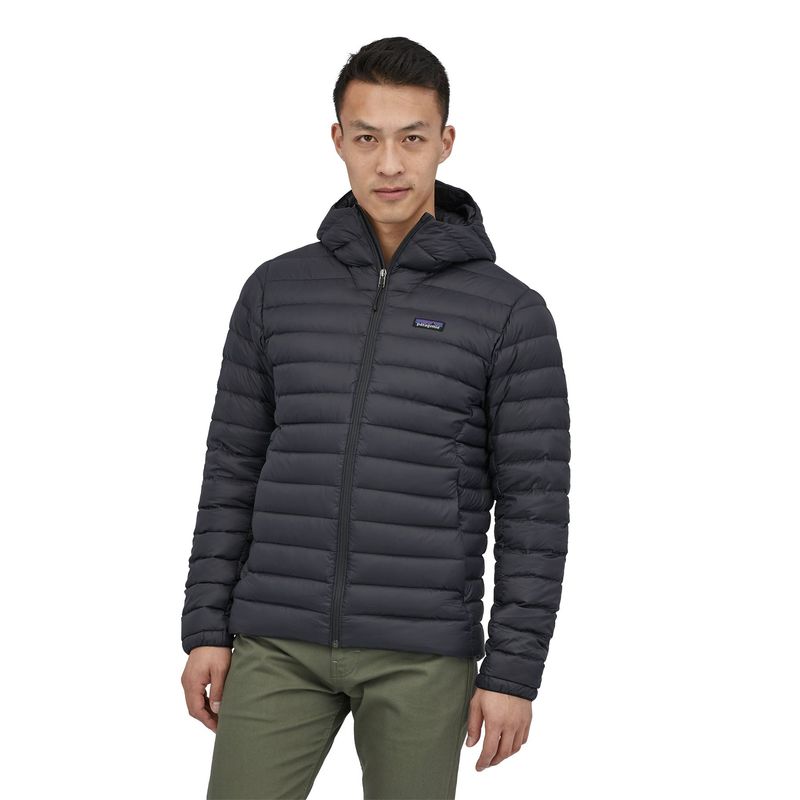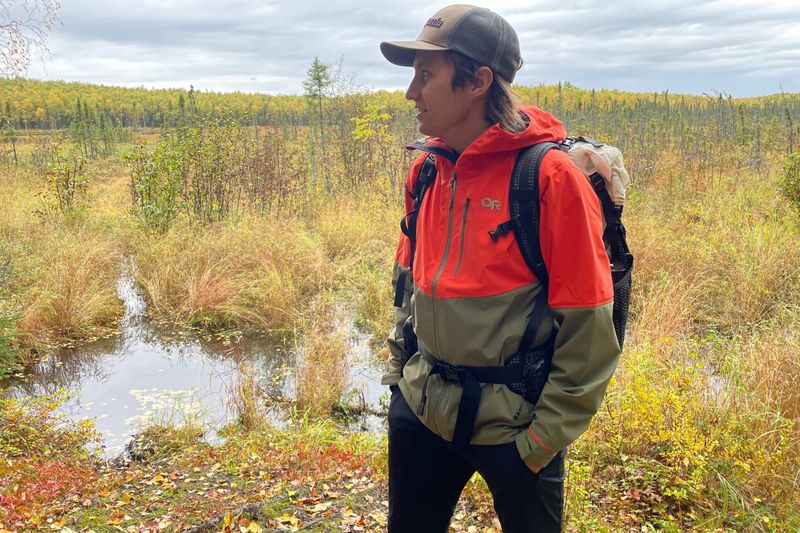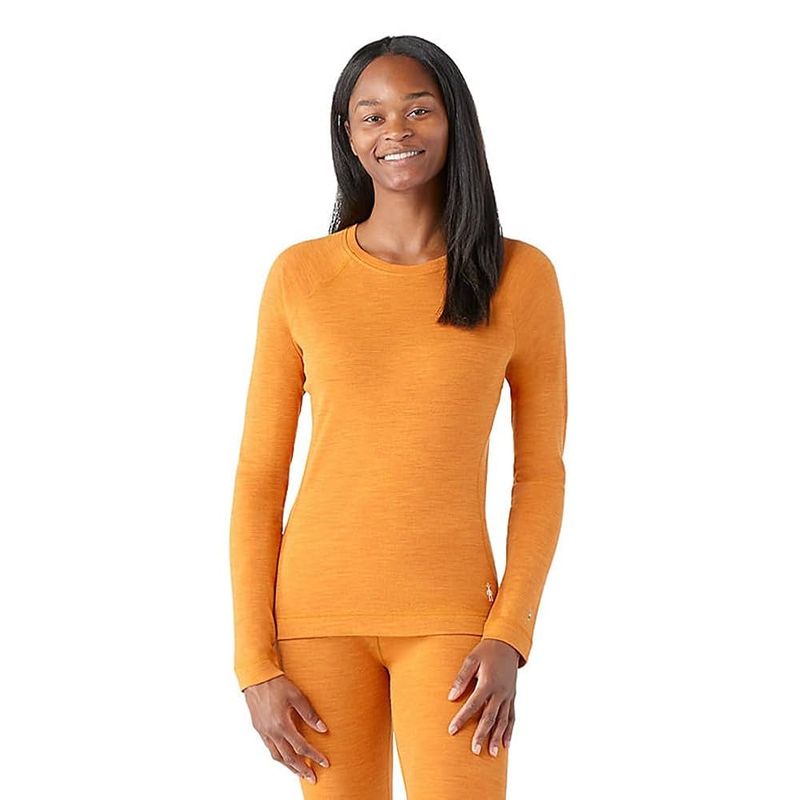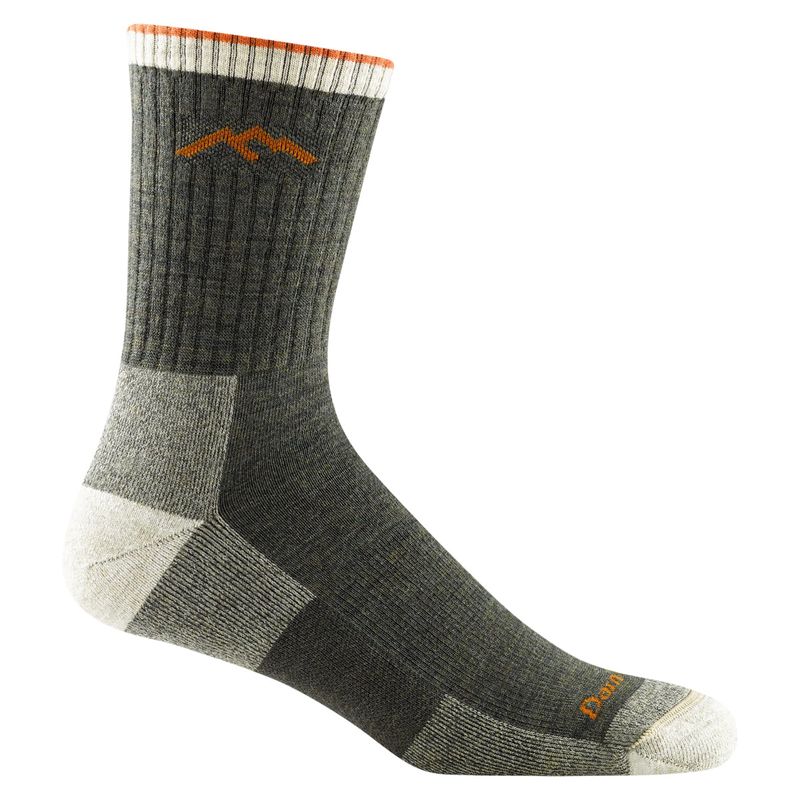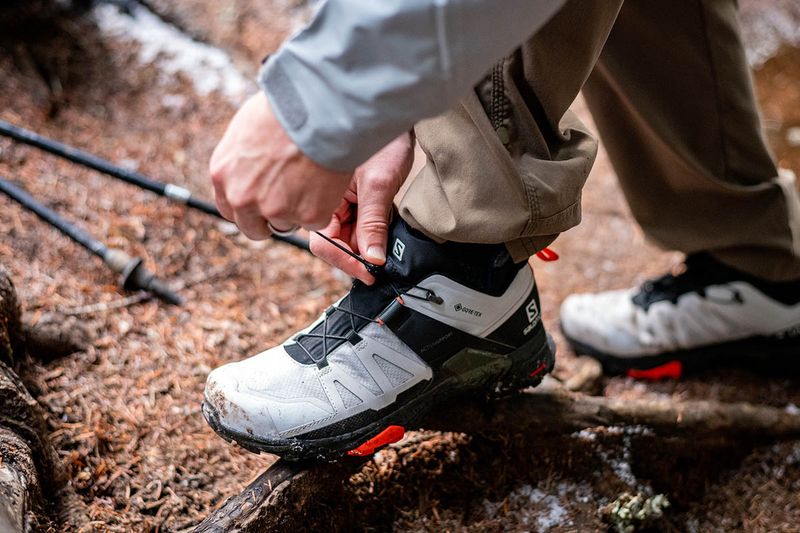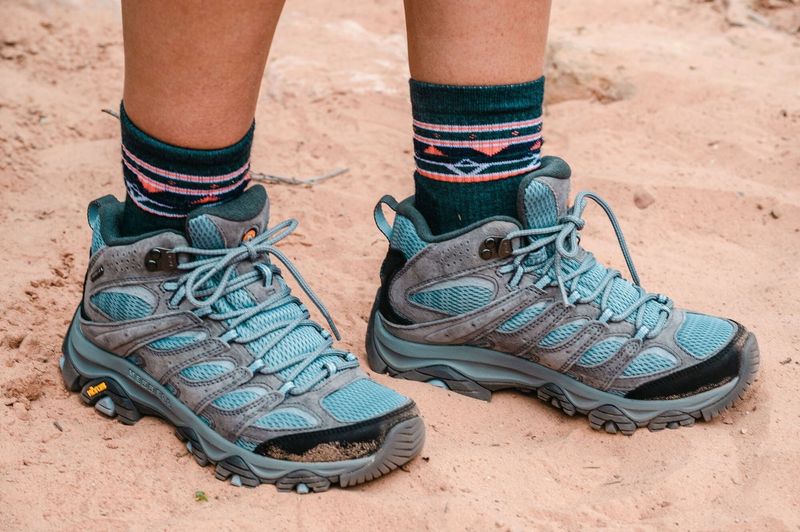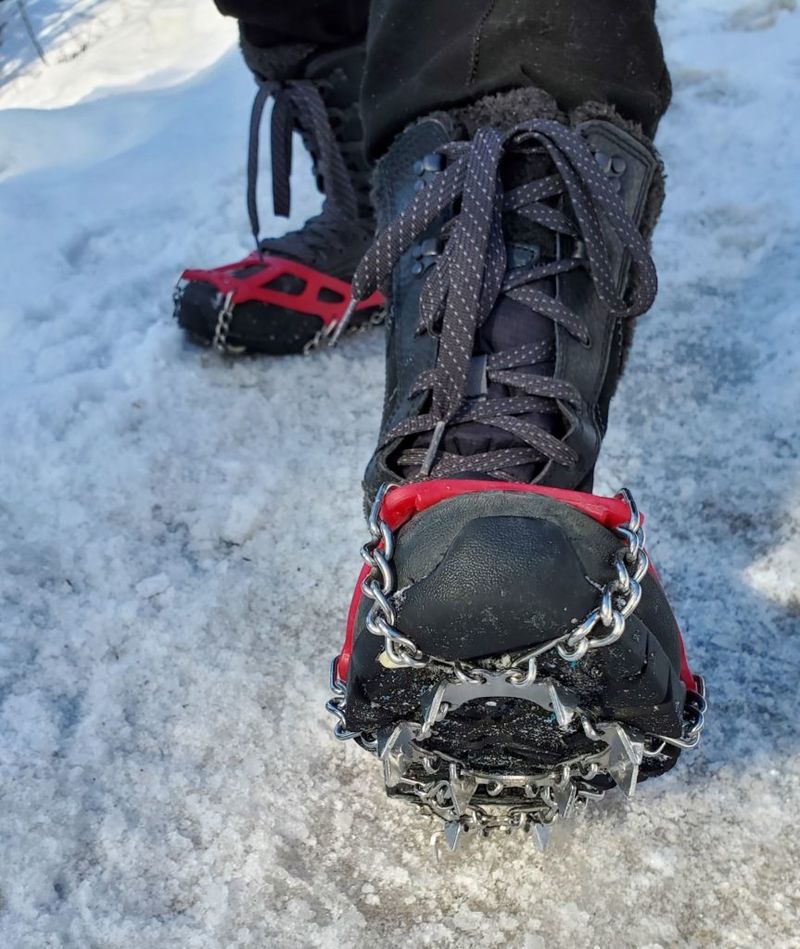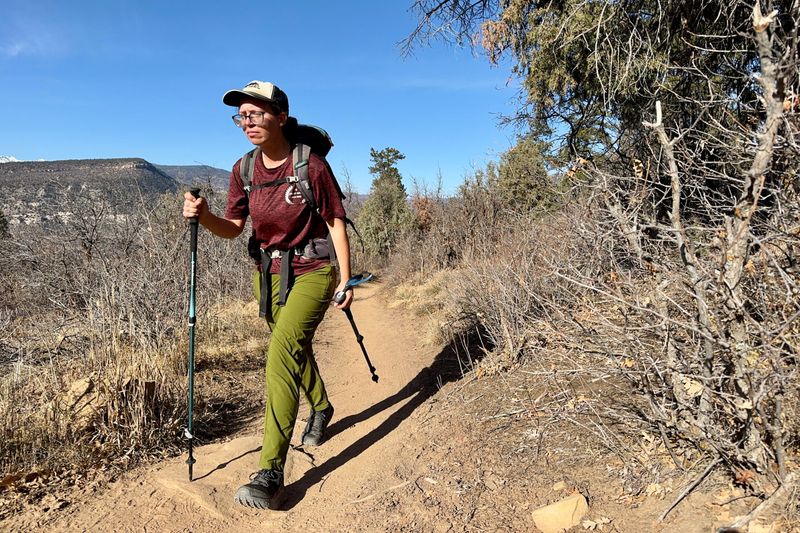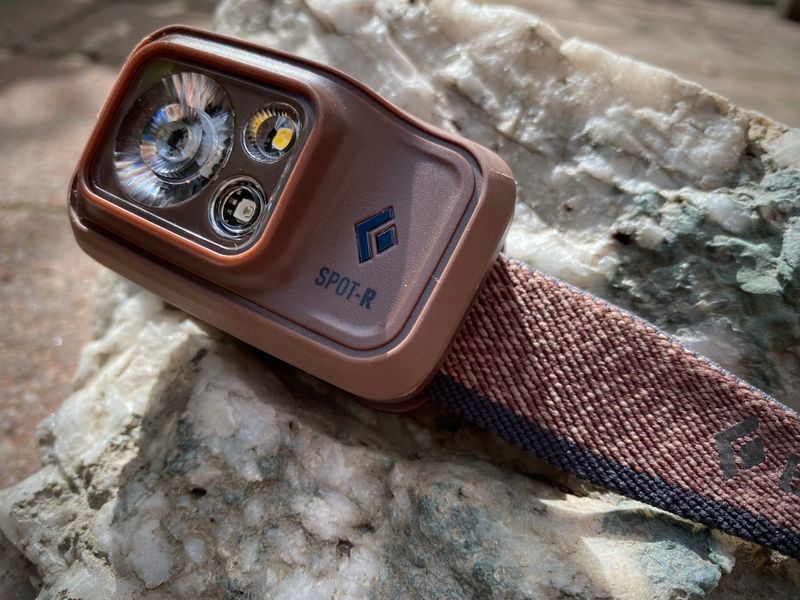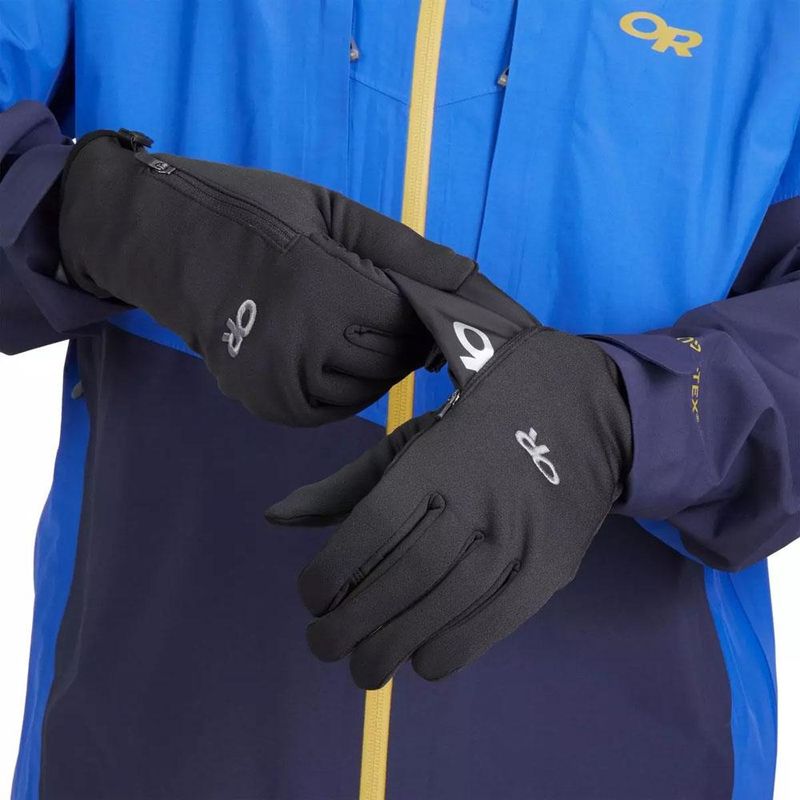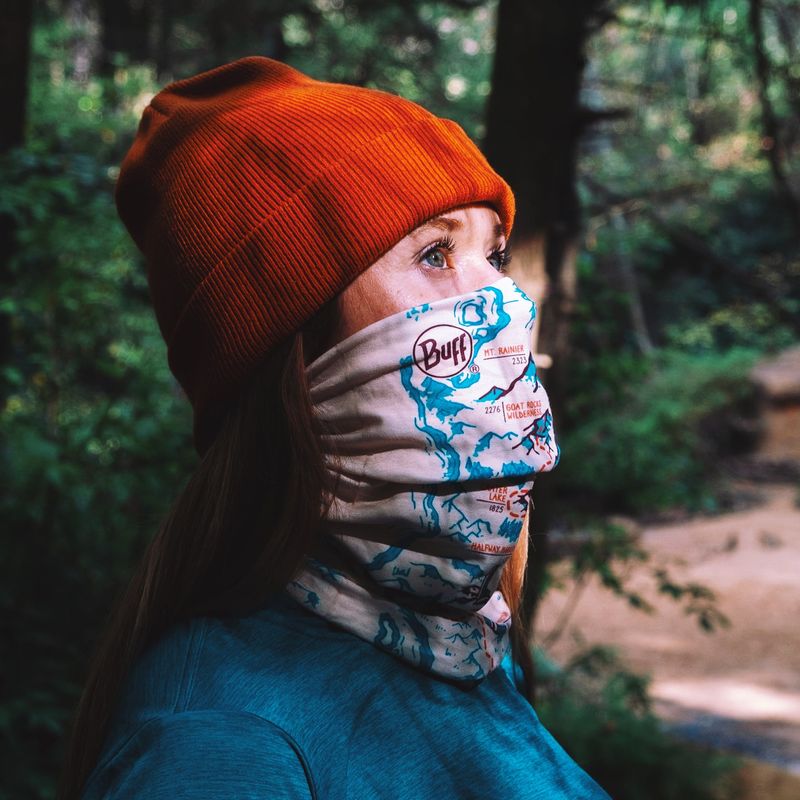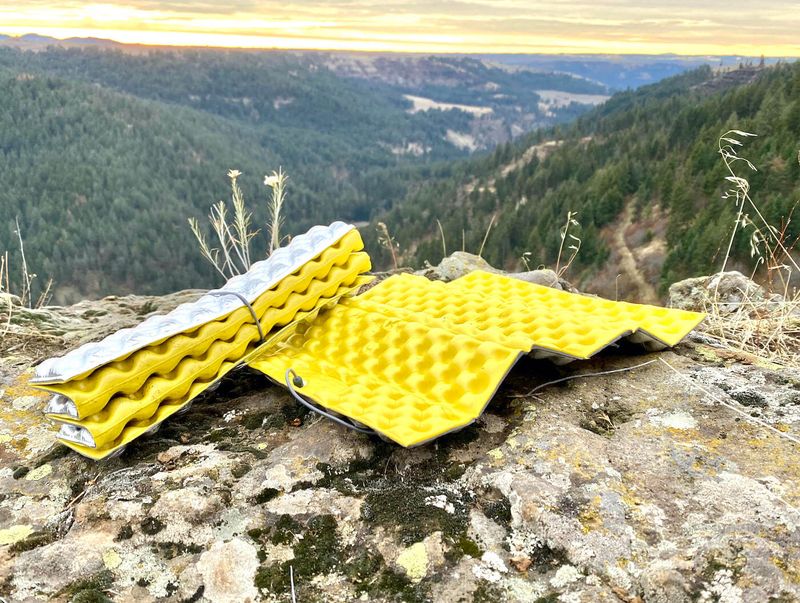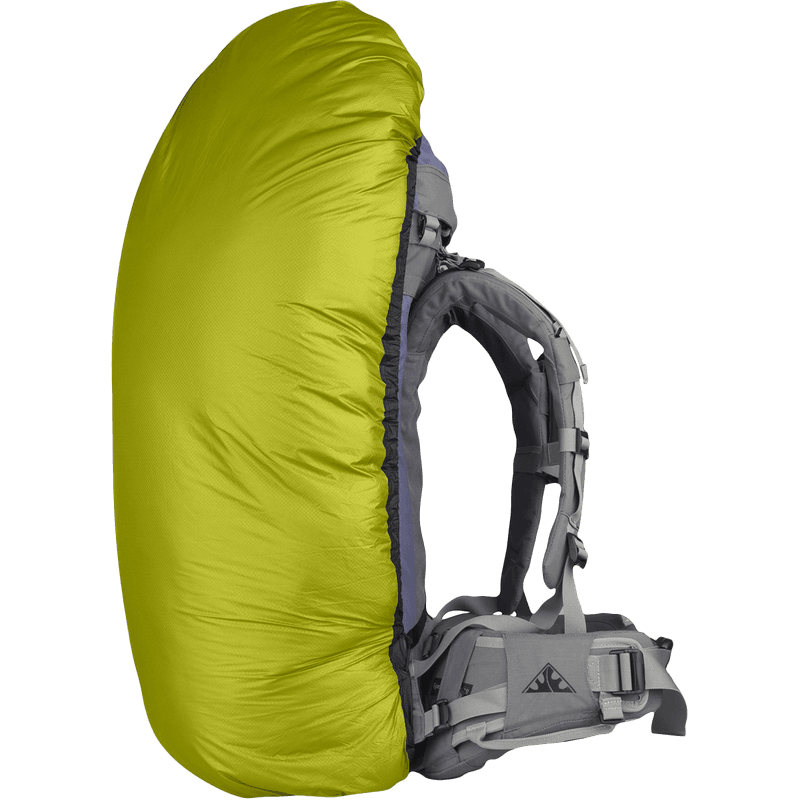When autumn leaves start to fall and temperatures drop, hitting the trail requires more than just enthusiasm. Cold mornings, unpredictable weather, and shorter daylight hours mean you need reliable gear that keeps you warm, dry, and safe. We’ve tested and reviewed fourteen essential pieces of cold-weather equipment that will transform your fall hiking experience from uncomfortable to unforgettable.
1. Patagonia Down Sweater Hoody
Patagonia’s Down Sweater Hoody has earned its reputation as the go-to puffy jacket for good reason. Packed with 800-fill-power down insulation, this jacket delivers impressive warmth without weighing you down on long trail days.
The windproof shell uses NetPlus® recycled nylon sourced from fishing nets, making it an eco-conscious choice. A PFC-free DWR coating sheds light moisture, while deep pockets keep your hands toasty during breaks.
What really sets this apart is its versatility—wear it as a midlayer under a shell or as your outer layer on dry, cold days. Patagonia even includes a repair patch in the box, showing their commitment to longevity over landfills.
2. Arc’teryx Atom Hoody
For hikers who work up a sweat even in cold weather, synthetic insulation often beats down. The Arc’teryx Atom Hoody uses Coreloft insulation that maintains warmth even when damp from perspiration or light rain.
Breathability is where this jacket truly shines—strategically placed panels allow heat to escape during steep climbs. Arc’teryx recently updated the DWR treatment to FC0, reducing environmental impact without sacrificing performance.
Think of the Atom as your active layer rather than a static camp jacket. It layers beautifully under a hardshell when storms roll in, yet performs solo on brisk, clear mornings when you’re moving fast and generating body heat throughout your hike.
3. Outdoor Research Foray II Rain Jacket
Fall weather changes faster than you can check your phone’s forecast. The Outdoor Research Foray II gives you GORE-TEX Paclite protection that packs down small enough to stay in your pack all season.
OR’s TorsoFlo venting system is genuinely innovative—full-length side vents run from hem to bicep, letting you dump excess heat on climbs without removing the jacket. This two-layer shell balances protection with packability brilliantly.
Nobody wants to carry a bulky rain jacket on sunny mornings, but October storms appear without warning. This proven design has protected countless hikers through surprise downpours, making it the ultimate “just in case” layer for unpredictable autumn adventures.
4. Smartwool Classic Thermal Merino Base Layer
Your base layer determines comfort more than any other piece of clothing. Smartwool’s Classic Thermal Merino uses 100% merino wool at a midweight 250 g/m² construction that handles temperature swings beautifully.
Merino naturally regulates body temperature—it warms when you’re cold and breathes when you heat up. Unlike synthetic base layers, merino resists odors even after multiple wears, perfect for multi-day trips.
This crew-neck design works from chilly dawn starts through warmer afternoon stretches. Merino feels soft against skin, wicks moisture efficiently, and layers seamlessly under everything from fleece to puffy jackets. Once you experience wool’s performance, cotton base layers become unthinkable for serious fall hiking.
5. Darn Tough Hiker Micro Crew Cushion Socks
Blisters can end a hike faster than bad weather. Darn Tough’s Hiker Micro Crew socks feature a performance fit engineered to prevent the slipping and bunching that causes hot spots.
The mid-crew height sits perfectly above boot cuffs, protecting ankles without excess fabric. Seamless toe construction eliminates the irritating ridge found in cheaper socks, while strategic cushioning absorbs impact on rocky descents.
Made in Vermont from merino wool, these socks regulate temperature and resist odors through cold, damp trail conditions. Darn Tough backs them with an unconditional lifetime guarantee—if they wear out, they’ll replace them. That confidence comes from decades of proven durability on trails worldwide.
6. Salomon X Ultra 4 GTX
Not every hiker wants heavy boots. Salomon’s X Ultra 4 GTX delivers waterproof protection and stability in a lightweight trail shoe that weighs roughly 1 pound 11 ounces per pair.
GORE-TEX keeps feet dry through puddles and stream crossings, while the aggressive Contagrip outsole grips confidently on wet, leaf-covered descents. The chassis design provides ankle stability without the bulk of traditional boots.
Fast hikers and trail runners appreciate how this shoe transitions from summer to fall seamlessly. The lower profile allows natural ankle movement while maintaining protection from roots and rocks. If you prefer moving quickly over technical terrain, these bridge the gap between running shoes and hiking boots perfectly.
7. Merrell Moab 3 Mid Waterproof
Some boots require weeks of painful break-in. The Merrell Moab 3 Mid feels comfortable immediately, making it ideal for hikers who want reliable footwear without the torture period.
A waterproof membrane keeps feet dry, while the pig-suede and mesh upper balances durability with breathability. Vibram TC5+ rubber outsoles grip confidently across varied terrain, and at approximately 495 grams per half-pair, they won’t exhaust your legs.
Budget-conscious hikers appreciate Merrell’s value proposition—you get legitimate waterproof protection and solid construction without premium pricing. These boots handle cold shoulder-season conditions across everything from forest trails to rocky ridges. For a do-everything boot that works right out of the box, the Moab 3 delivers consistently.
8. Kahtoola MICROspikes
Early snow, icy bridges, and frozen leaf litter transform familiar trails into skating rinks. Kahtoola MICROspikes slip over your existing footwear and provide dramatic traction improvements through stainless-steel spikes.
The elastomer harness stretches to fit various boot sizes and stays secure without complicated straps. Each spike bites into ice and frozen ground, giving you confidence on surfaces that would otherwise be treacherous.
MICROspikes pack down small enough to live in your pack all season. When conditions deteriorate unexpectedly, five minutes spent putting them on can prevent a dangerous fall. They’ve become standard equipment for experienced fall and winter hikers who refuse to let changing conditions keep them off the trails they love.
9. Black Diamond Trail Trekking Poles
Trekking poles aren’t just for older hikers anymore. Black Diamond’s Trail poles provide stability and reduce joint stress on descents, especially when trails turn slick with wet leaves and mud.
These durable aluminum poles now incorporate UL-verified 30% pre-consumer recycled aluminum in the shafts, representing at least 14% of total product weight. Adjustable length accommodates different terrains and user heights.
Beyond stability, poles help you maintain rhythm on long climbs and test uncertain footing before committing your weight. They take pressure off knees during steep downhills, which becomes increasingly valuable as hikes grow longer. Many skeptics become converts after one slippery fall hike with proper pole technique.
10. Black Diamond Spot 400 Headlamp
Daylight disappears quickly in fall, catching unprepared hikers in darkness. The Black Diamond Spot 400 delivers 400 lumens of adjustable light in a compact, well-balanced package that won’t bounce annoyingly on your forehead.
Dual-fuel compatibility lets you choose between a rechargeable BD 1500 lithium-ion battery or three AAA batteries. This flexibility means you’re never stuck without power options on longer trips.
The low-profile design distributes weight evenly, preventing the front-heavy feeling common with cheaper headlamps. Multiple lighting modes—including a red night-vision setting—preserve your natural night vision while providing enough illumination to navigate safely. When sunset arrives an hour earlier than summer, this headlamp becomes essential safety equipment.
11. Outdoor Research Versaliner Sensor Gloves
Fall weather demands adaptable gear. OR’s Versaliner system pairs cozy fleece liners featuring touchscreen-friendly fingertips with an ultralight waterproof shell that stows in a zip pocket when conditions improve.
Wear just the liners during moderate temperatures, add the shell when precipitation starts, or use both layers together when cold winds arrive. This modular approach beats carrying multiple glove options.
The touchscreen compatibility means you can check GPS navigation or snap photos without exposing bare hands to cold air. The shell packs so small you’ll forget it’s there until suddenly you need it. For hikers who hate bulky gloves but need real protection, this system delivers genuine versatility across changing fall conditions.
12. BUFF Original Multifunctional Neckwear
A simple tube of fabric shouldn’t be revolutionary, yet BUFF’s seamless design has become ubiquitous on trails worldwide. This lightweight piece wears over a dozen ways—neck gaiter, beanie, balaclava, headband, and more.
Four-way stretch fabric adapts to different wearing styles without binding or restricting movement. Many versions offer UV protection, making them useful beyond just cold weather.
Wind cuts through other clothing layers but gets stopped cold by a BUFF around your neck. The small size and minimal weight mean there’s zero excuse not to pack one. When unexpected gusts arrive on exposed ridges, you’ll appreciate having this versatile piece that delivers comfort far beyond its simple construction would suggest.
13. Therm-a-Rest Z Seat
Sitting directly on cold, wet surfaces drains body heat faster than most hikers realize. Therm-a-Rest’s Z Seat uses closed-cell foam in an accordion fold that’s nearly indestructible and provides excellent insulation.
This simple sit pad weighs almost nothing and attaches easily to pack exteriors. Unlike inflatable options, it can’t puncture or fail when you need it most.
Rest breaks become genuinely restful when you’re not losing warmth through your backside to frosty rocks or damp logs. The Z Seat might seem like a luxury until you experience the comfort difference on a cold October afternoon. Veteran hikers consider sit pads essential gear, not optional accessories, for fall and winter trail conditions.
14. Sea to Summit Ultra-Sil Pack Cover
Waterproof stuff sacks protect individual items, but what about your entire pack? Sea to Summit’s Ultra-Sil cover uses 30-denier silicone-impregnated Cordura that weighs under four ounces in medium size.
The cover stuffs incredibly small—about the size of a tennis ball—yet deploys quickly when rain arrives. It shields your pack’s contents from fall showers that would otherwise soak through standard pack fabrics.
Wind-driven rain can still sneak in at the back panel where the cover meets your body, so it’s not perfect. However, for weight-conscious hikers who want simple, effective protection without expensive waterproof packs, this cover delivers real value. When October storms roll in unexpectedly, you’ll be grateful for this lightweight insurance policy.
